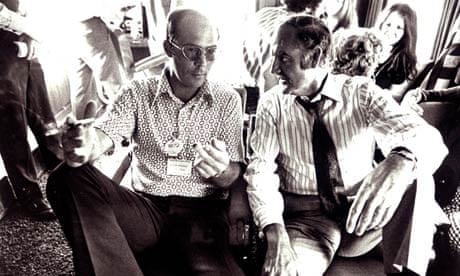Hunter S Thompson's very first piece for Rolling Stone is one of his most famous. In October 1970 he chronicled in wonderful detail his bid to become a Colorado sheriff; to win the vote of the "Freaks, Heads, criminals, anarchists, beatniks, poachers, Wobblies, bikers and Persons of Weird Persuasion". The Battle Of Aspen: Freak Power in the Rockies revealed Thompson to be a perceptive political writer, a skill he would refine in his seminal presidential election series for Rolling Stone, Fear and Loathing: on the Campaign Trail '72.
Then again, The Battle Of Aspen also boasts the line: "On my own front porch I have a palm tree growing in a toilet bowl… and on occasion I like to wander outside, stark naked, and fire my .44 Magnum at various gongs I've mounted on the nearby hillside."
And therein lies the counter-cultural allure of Hunter S Thompson, which this compendium of Thompson's work for Rolling Stone over a 34-year period does little to dissipate. That he popularised a new, exciting form of gonzo journalism, where the profane, hyperactive writer was at the heart of the story, is without question. But reading his dispatches back to back doesn't confound the notion that, for all the liberating properties of gonzo's speedy reportage, if Thompson wasn't completely on the ball his work could seem dashed off and self-obsessed. Given that, in only his second piece for Rolling Stone, he details his custom for consuming large quantities of "cactus products", it's no surprise that Thompson's lifestyle eventually caught up with his writing.
Still, people loved to read his work – and didn't Rolling Stone know it. The book also reveals Thompson's correspondence with the editorial team, and one letter bears a list of exciting commissions and generous deadlines. "None of these assignments came to fruition," is written in italics underneath. Thompson was probably on the hunt for cactus. But Rolling Stone still went back for more.

Comments (…)
Sign in or create your Guardian account to join the discussion